The rhinoceros Clara became quite a celebrity when she came to Venice for the Carnival in 1751.
Source: Gli abiti de veneziani di quasi ogni età con diligenza raccolti e dipinti nel secolo XVIII, by Giovanni Grevembroch (1731–1807), which in four volumes contains over six hundred watercolours of how Venetians dressed in the 1700s.
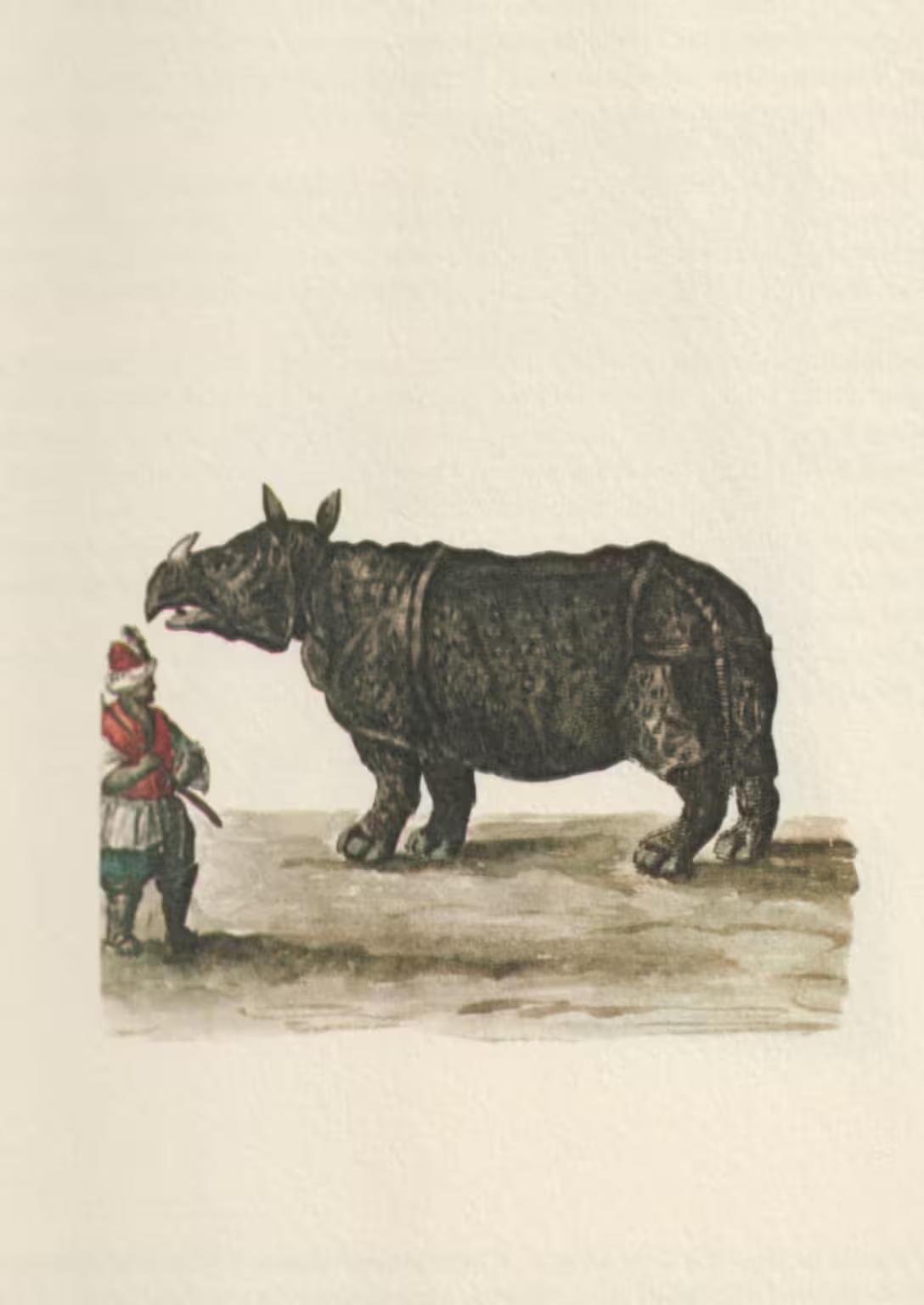
Rhinoceros
As we were at the end of this Work,1 which perhaps will one day become very clear, due to the splendour of the things we have painted and exhibited, that Animal, called Rhinoceros, arrived in Venice, after a tour of all of Europe, which was considered fabulous by some; but in fact it is a rare show, captured in the States of the Great Mogul. Captain Davide Moutuander-Meer2 also transported it here for Carnival of the year 1750 in 22 January, on a covered wagon, pulled by many horses. This great Beast ate twenty pounds of bread, sixty of hay, and drank fourteen buckets of water, or even beer. It weighed about five thousand pounds of 18 ounces, and through universal curiosity, the Master profited here, about four thousand ducats, most of which he left on the Tables of the Ridotto.3 After having demonstrated in many sheets the spirit of the human intellect in the various Ideas of dressing with Art, we will close this series, with the prodigious discoveries of Nature in covering even such immense Quadrupeds, and with the news; that even at the time of Doge Andrea Dandolo, that is, in the 14th century, there was another Rhinoceros in Venice.4
To Mr. and Architect Alvise de Preti, whose prowess here and elsewhere stood out, in order to facilitate the transport from Province to Province of this gigantic Animal, we send this Model.
Translator’s notes
- Grevembroch’s work on how the Venetians dressed was meant to be in three volumes, and this is the last plate in volume 3. A fourth volume was then added later. ↩︎
- The correct Dutch name is Douwe Jansz Mout van der Meer. ↩︎
- The Ridotto was a palace on the Grand Canal near San Moisè where the nobility met for gambling. More generally, the word means a meeting or a meeting place ↩︎
- This story is probably related to a mosaic in the Basilica di San Marco, in the Chapel of St Isidore, depicting a rhinoceros. No written sources confirm this story. ↩︎

Original Italian text
Mentre noi ci ritrovassimo al fine di quest’Opera, che forse diverrà un giorno chiarissima, per lo splendore delle cose, che abbiamo dipinte, ed esposte, giunse in Venezia, dopo il giro di tutta l’Europa, quell’Animale, chiamato Rinoceronte, che fù da alcuni riputato favoloso; ma infatti è una rara Fiera, presa negli Stati del Gran Mogol. Il Capitano Davide Moutuander-Meer lo trasportò anche qui nel Carnovale dell’anno 1750 a 22 Gennajo, sopra un Carro coperto, tirato da molti Cavalli. Tale gran Bestia mangiava venti libre di pane, sessanta di fieno, e bevea quattordeci secchi d’acqua, o pure di birra. Pesava circa cinquemilla libre da oncie 18, e mediante la curiosità universale, lucrò il Padrone qui, circa quattro milla ducati, la maggior parte de quali lasciò sopra le Tavole del Ridotto. Dopo aver Noi dimostrato in tanti Fogli lo spirito dell’Intelletto umano nelle varie Idee di vestire coll’Arte, chiudaremo questa serie, con gli prodigiosi ritrovamenti della Natura nel coprire anche si smisurato Quadrupede, e con la notizia; ch’anche a tempi del Doge Andrea Dandolo, cioè nel Secolo XIV vi fu a Venezia un altro Rinoceronte.
Al Sig.e Architetto Alvise de Preti, le cui prodezze qui, ed altrove spiccaron, acciò mediti di agevolare il trasporto da Provincia a Provincia di questo gigantesco Animale, mandassimo il presente Modello.
Grevembroch (1981), vol. 3, p. 163.
Related articles
- Gli abiti de veneziani — by Giovanni Grevembroch
- Clara — the star of the Carnival
- Carnival in Venice
Bibliography
- Grevembroch, Giovanni. Gli abiti de veneziani di quasi ogni eta con diligenza raccolti e dipinti nel secolo XVIII, orig. c. 1754. Venezia, Filippi Editore, 1981. [more]

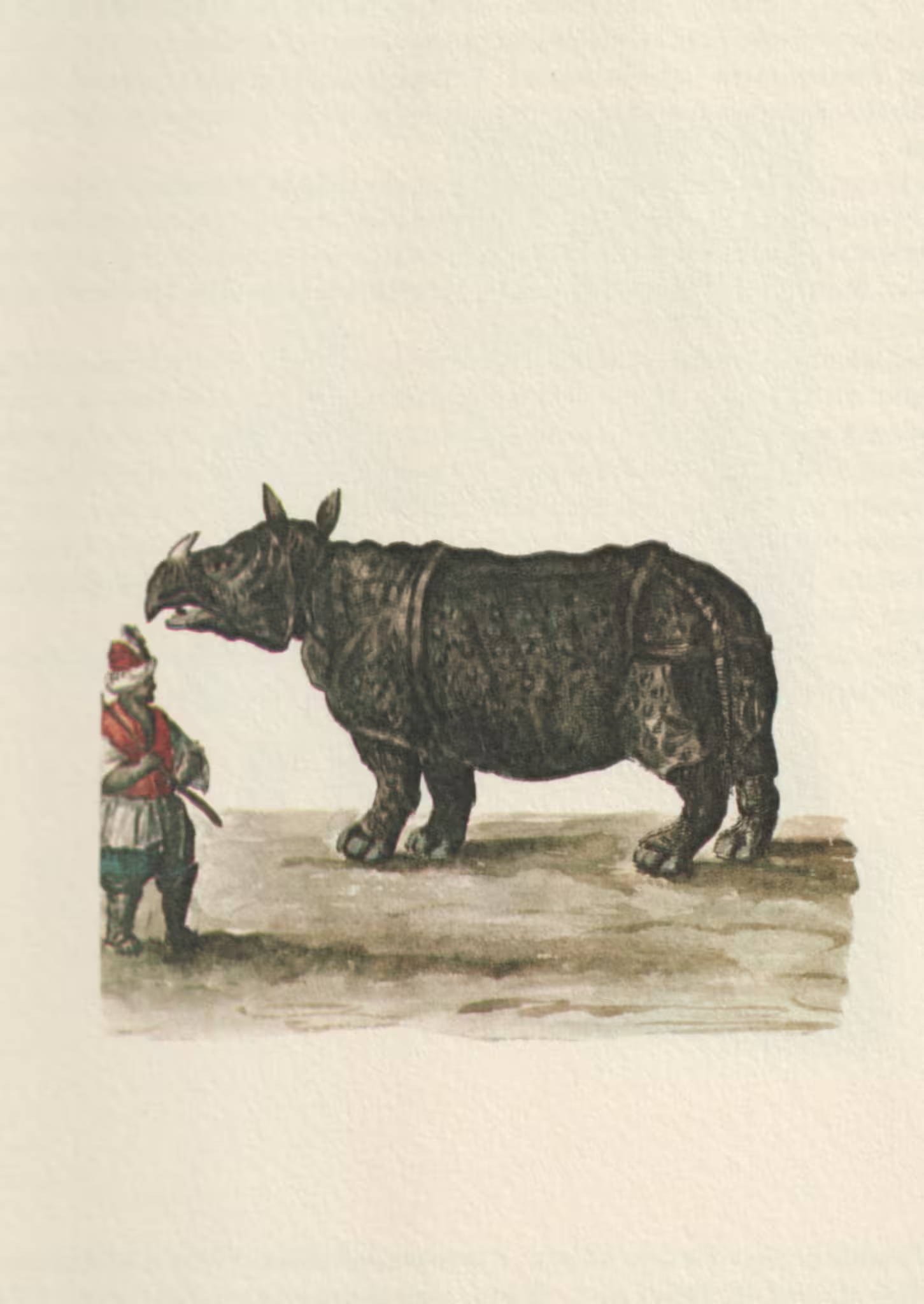
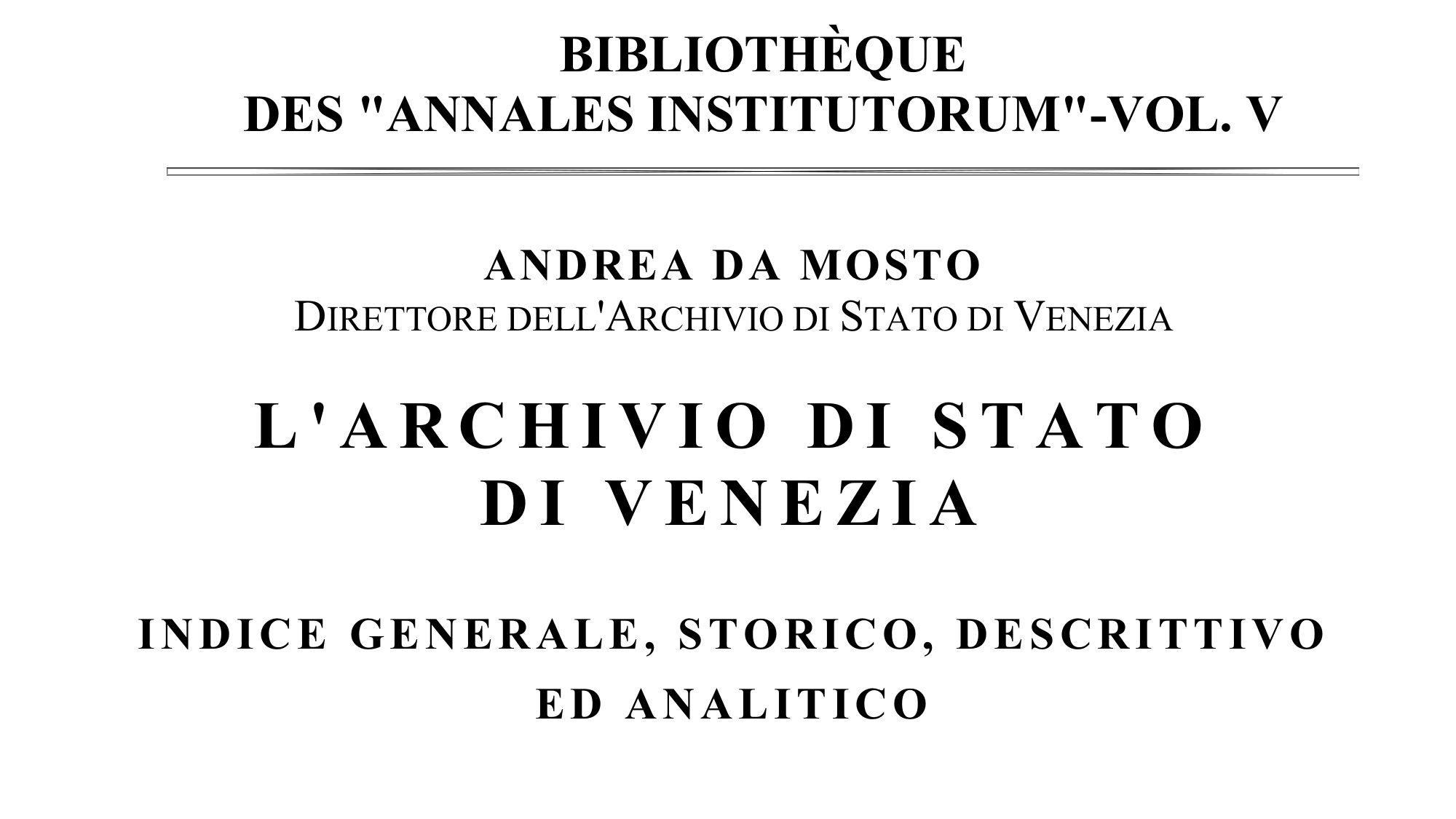
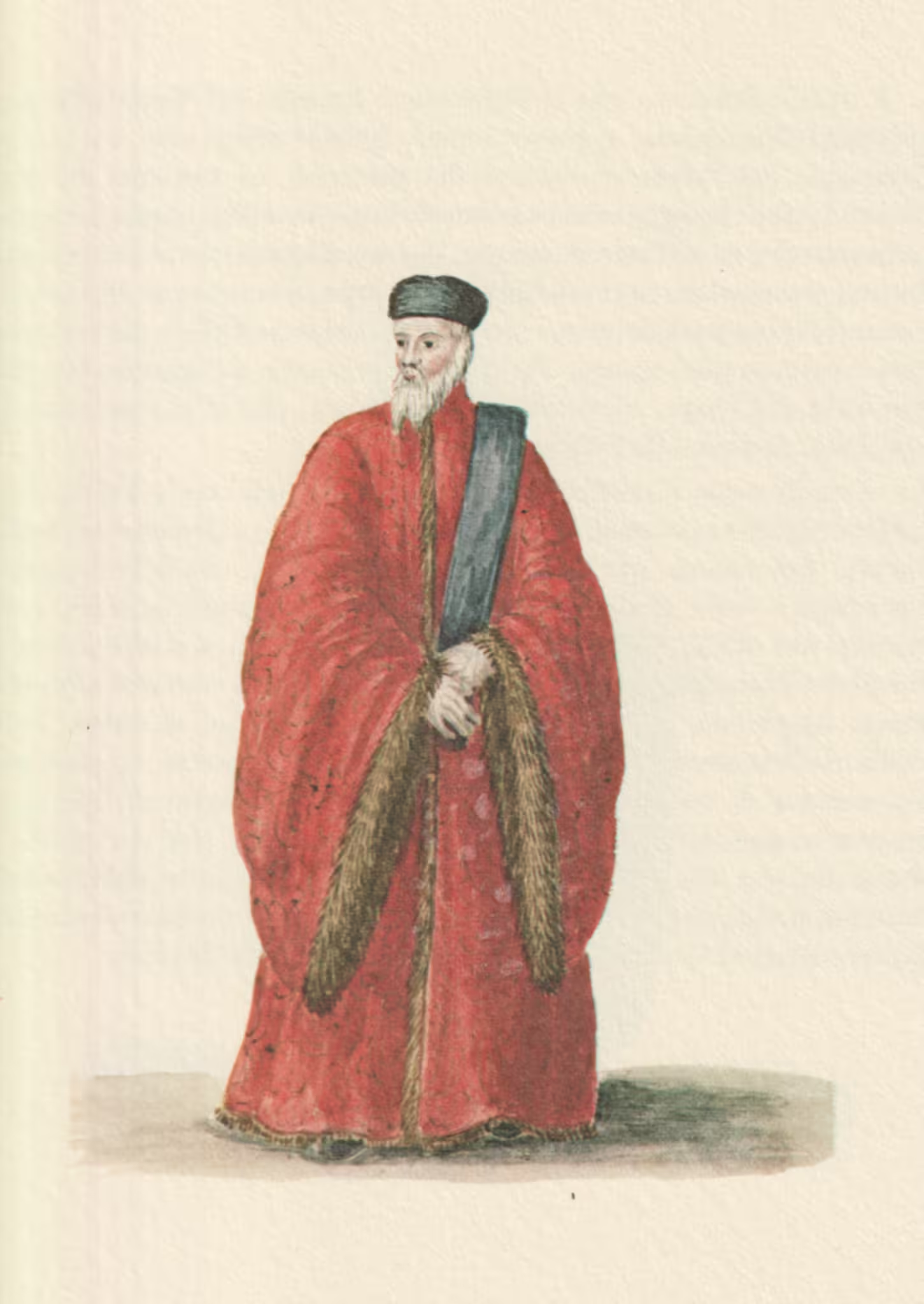
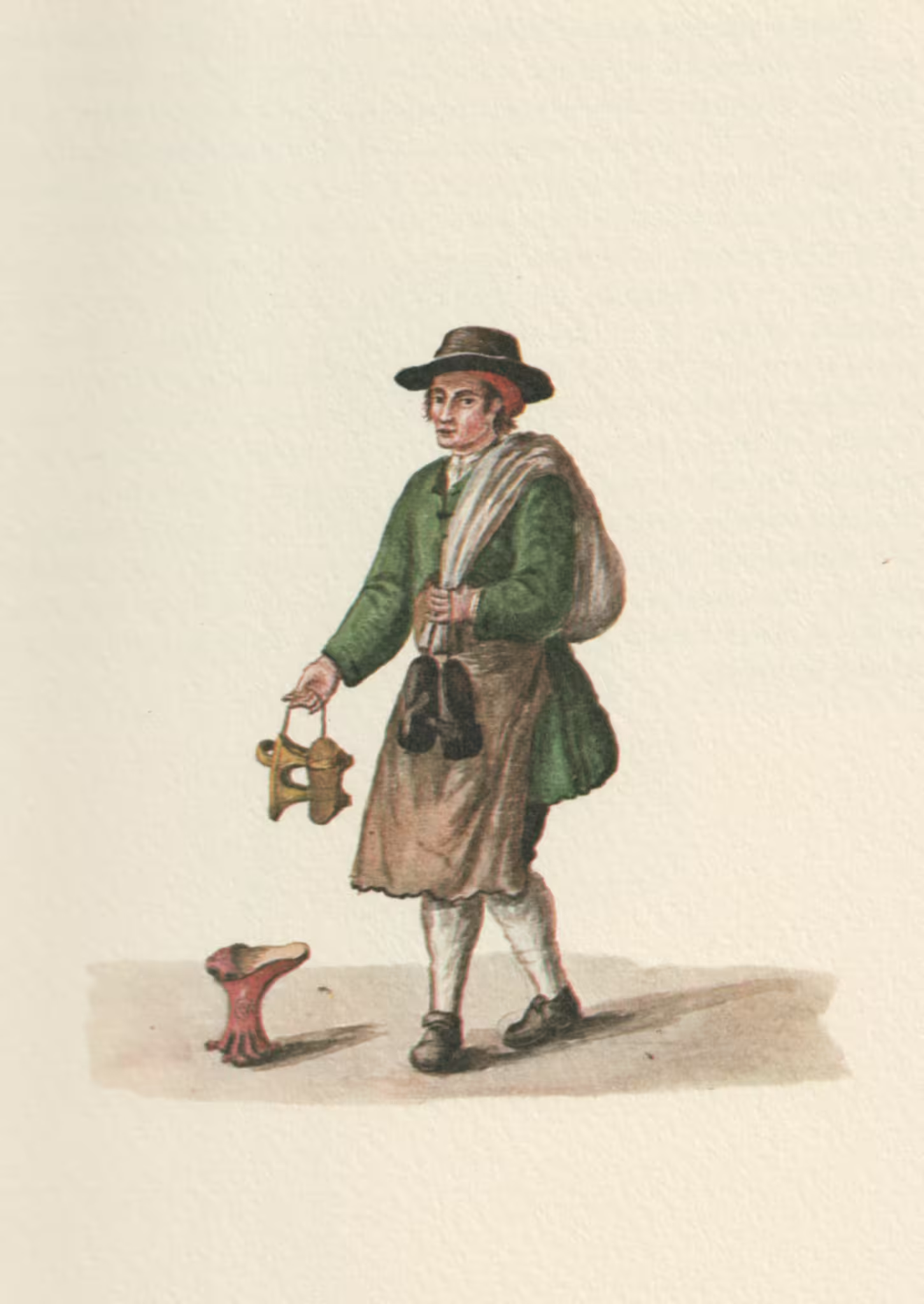
Leave a Reply